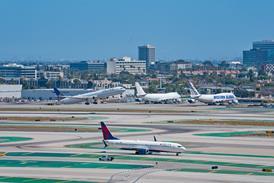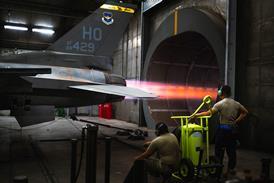Boeing and Lockheed Martin are planning distinctly different flight test programmes for their short take-off and vertical landing (STOVL) Joint Strike Fighter concept demonstrators.
Boeing's X-32B has completed maximum-thrust engine runs in STOVL mode in pit testing at Palmdale, California. First flight is expected before the end of March. "This was the last significant test before we fly," says deputy JSF programme manager Mike Heinz.
Lockheed Martin does not plan to fly its STOVL X-35B before mid-June but, because of a different approach to flight testing, it could be first to demonstrate vertical landing capability.
Boeing will begin testing at Edwards AFB, California, with two or three conventional flights to check basic airworthiness. These will be followed by up to 10 STOVL transition flights in which the X-35B will be slowed to 200kt (370km/h) to check integrated flight and propulsion control.
In mid-May, the X-32B will be ferried to the US Navy's Patuxent River, Maryland, test centre where it will begin "build down" STOVL testing. At 10,000ft, the aircraft will decelerate, transition from axial to vertical thrust and slow to a hover to validate performance predictions. Transitions will be repeated at gradually lower altitudes until, at 50ft, the aircraft will commit to a vertical landing over a hover pit designed to reduce ground effects. Later landings will be to a pad.
Vertical landings will come at the end of a 50-flight test programme expected to be complete by mid-July. The sea-level Pax site was chosen because the direct-lift X-32B does not have adequate thrust margin for vertical landing at 2,500ft- (760m) high Edwards.
Lockheed Martin, anticipating adequate thrust margin from its shaft-driven lift fan, plans to begin X-35B flight testing in mid-June with a series of hovers over a pit at Palmdale. "We want to know we have a safe hover zone to land from if something goes wrong in the transition," says JSF deputy programme manager Harry Blot.
"Build down" STOVL testing over 14-20 flights is planned for Edwards, but may move to Pax if the US Air Force decides the X-35B is unable to make safe vertical landings at Edwards.
Source: Flight International























